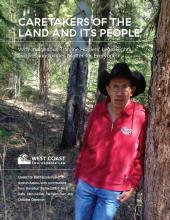
Over the past several years, lawyers at West Coast Environmental Law have received a number of inquiries from Indigenous trapline holders in BC seeking to protect their hereditary and registered traplines from the cumulative impacts of various industrial projects including logging, mining, hydroelectric damming, and oil and gas development. In conducting legal research on behalf of these clients, we found that the law on traplines was complex to navigate and that there were relatively few existing secondary resources available.
The trappers and hunters we spoke with expressed an obligation under their own Indigenous laws to uphold the wellbeing of their trapline territories, both for the sake of their families and future generations, as well as for the sake of the land. They wanted to find out what Canadian legal tools might exist to help them fulfill these obligations to the land and to their families. This report is our response to their request.
The report shares Indigenous legal perspectives on trapline governance, and outlines a series of legal tools in Canadian law for protecting trapline holders’ rights and responsibilities. It also lists recommendations for governments to help address the problems – including recognizing Indigenous law regarding traplines, conducting “big picture” assessments to manage cumulative effects, and implementing the United Nations Declaration on the Rights of Indigenous Peoples.